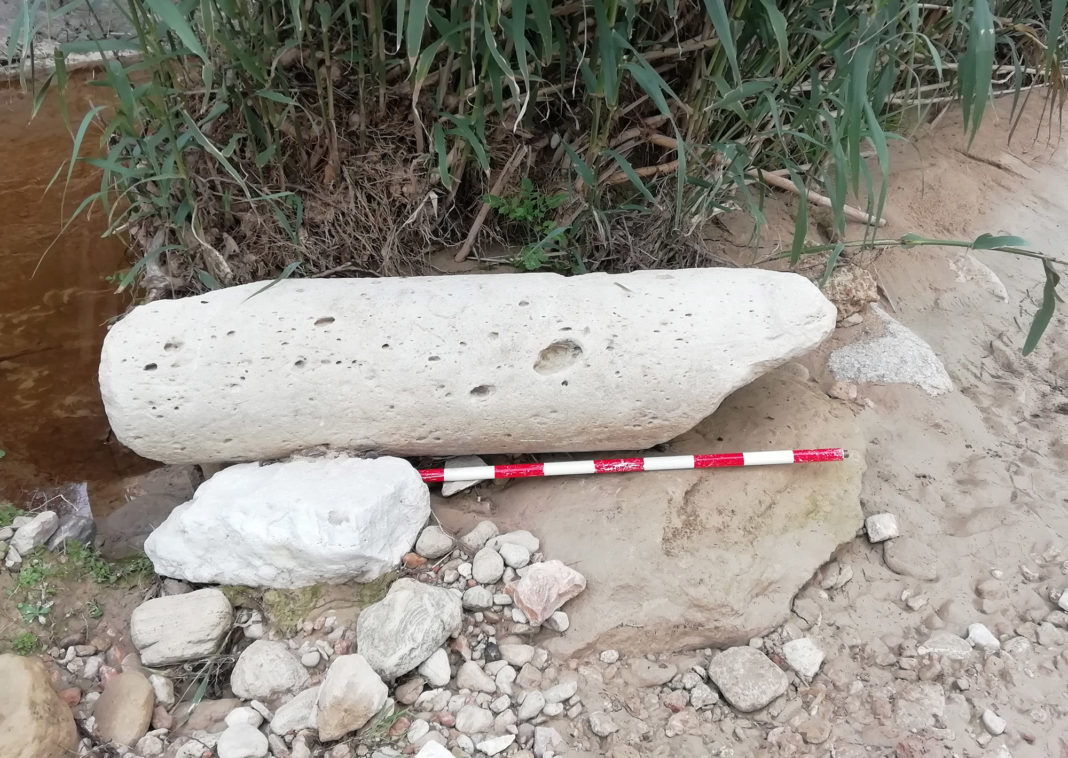The Councilor for Historical Heritage, Rafael Almagro, spoke on Thursday about the recent discovery of a Roman miliary in Dehesa de Campoamor, in the bed of the River Nacimiento.
It was found in January, but it was not until this month that it was placed in the Orihuela Regional Archaeological Museum.
The milestone was unearthed following the heavy rains and floods at the beginning of the year. Municipal archaeologist, Emilio Diz, said that it had been buried since ancient times and was a very important find.
Almagro said that this will be the second emblematic piece from the Roman period which has found its way to the museum, “and which will complement the items that we already have from Prehistory, such as the” Orihuela Idol “, the “Hebraic Stele” from the Middle Ages “Islamic graves” and the 12th century piece of “Painted skirting board from the Orihuela castle”
The piece has already been documented by a professor at the University of Alicante, D. Juan Manuel Abascal Palazón, who is a specialist in Latin epigraphy. “Important documentation work has now been carried out, such as photographing, tracing the inscription on acetate and creating a negative 3D model by applying cellulose sheets onto the piece,” said Emilio Diz.
A miliary or milestone, word from the Latin miliarium, is a cylindrical, oval or parallelepiped column that was placed on the edge of Roman roads to indicate the distances every thousand passus (Roman double steps) that is, every Roman mile, which is equivalent to a distance of approximately 1480 metres.
This particular piece is made of limestone, height 143mm with a diameter of 37/39 cm. It is said to be from the III-IV centuries AD.
The inscription is heavily eroded due to the action of the waters and sands of the Río Nacimiento.
There is one other local miliary which was found in the San Ginés estate, and which is currently preserved in the Pilar de la Horadada museum. Which confirms that the “Via Augusta” passed through the area. This was well used Roman road that ran along the Mediterranean coast from the Pyrenees to Gades (Cádiz), passing through Carthago Nova (Cartagena) and Corduba (Córdoba).
Ancient sources describe this great route, the longest road that crossed the Iberian Peninsula in Roman times. The Orihuela region was an obligatory point of passage on the journey from Ilici to Cartago Nova, with the Thiar mansion, an official stop, maintained by the government.





